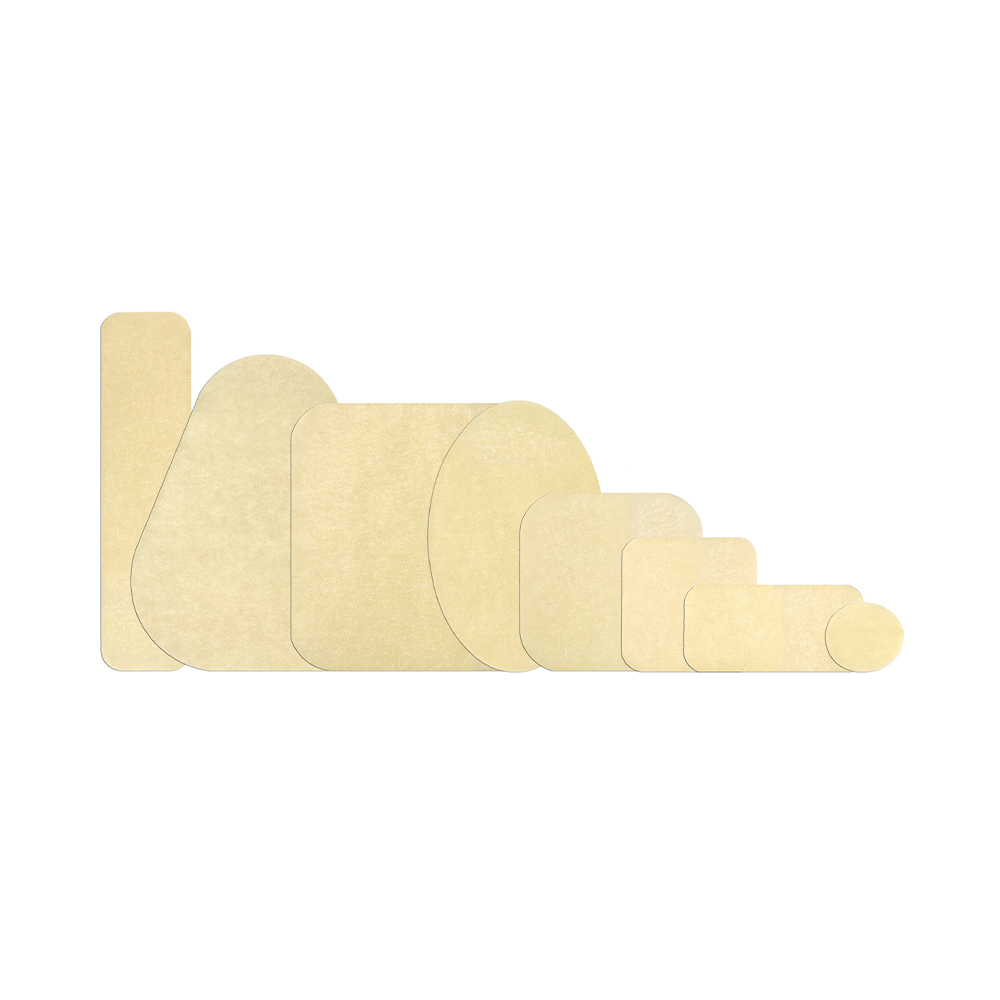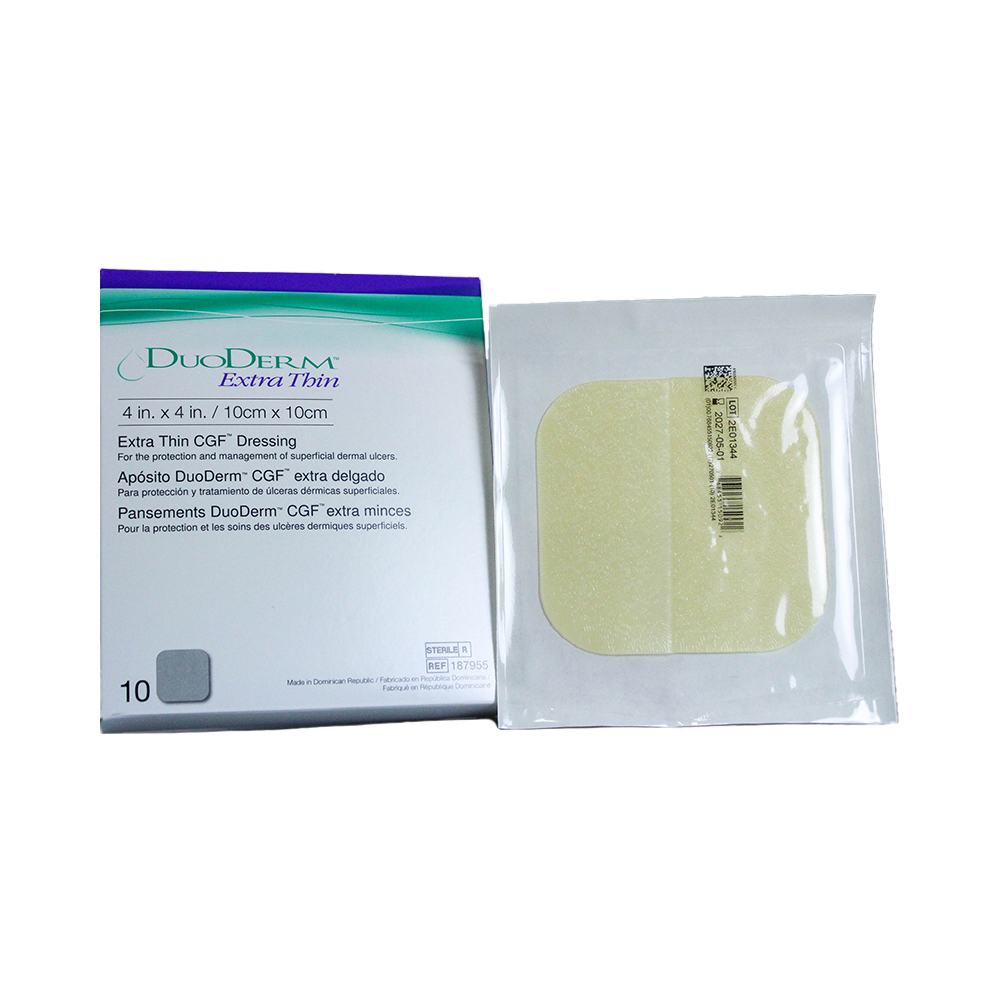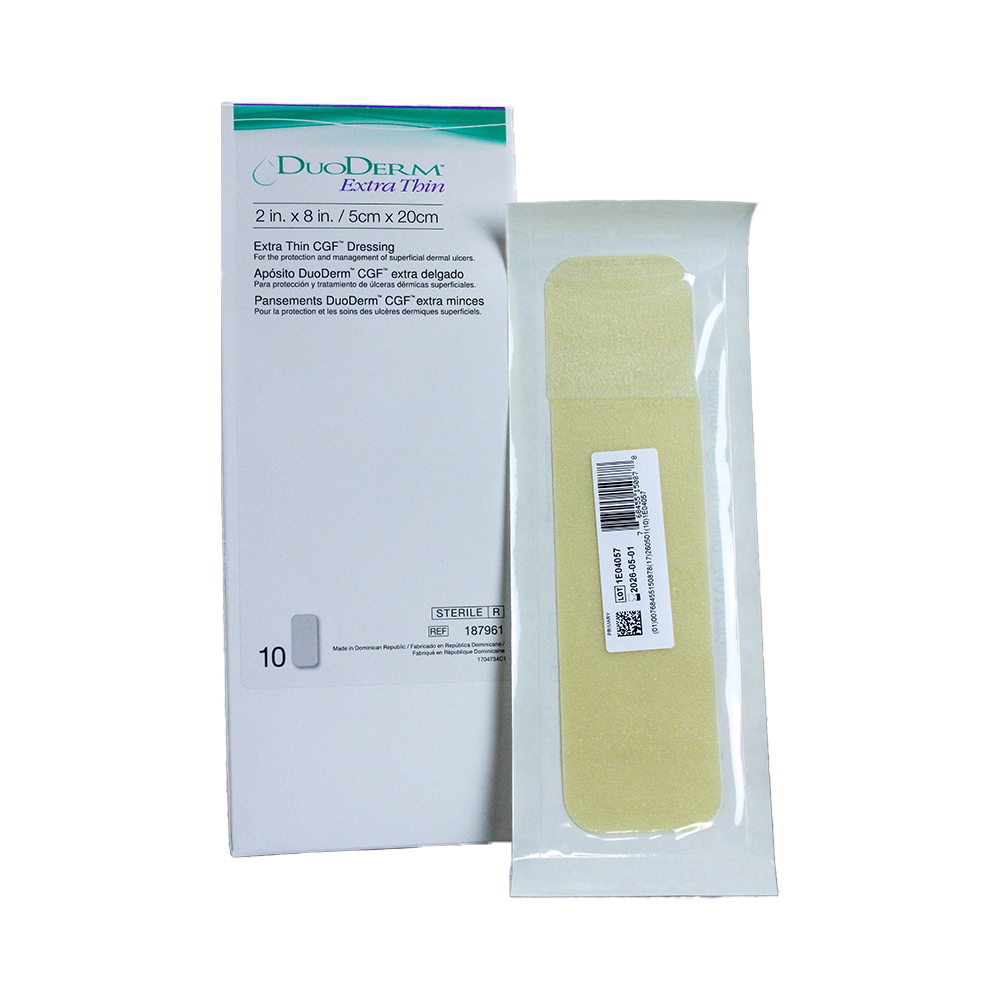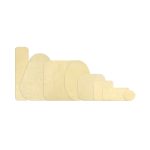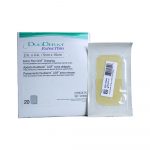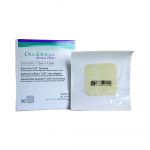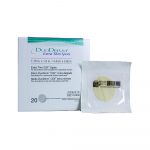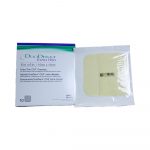- My Account
- Place a Reorder
- Logout
DuoDERM CGF Extra Thin Dressing
Brand: DuoDERM
Manufacturer: ConvaTec
Lorem ipsum dolor sit amet, consectetur adipiscing elit. Ut elit tellus, luctus nec ullamcorper mattis, pulvinar dapibus leo.
Lorem ipsum dolor sit amet, consectetur adipiscing elit. Ut elit tellus, luctus nec ullamcorper mattis, pulvinar dapibus leo.
DESCRIPTION
DETAILS
Reviews
DESCRIPTION
Not all hydrocolloids are the same.
The DuoDERM family of products is designed to bring gentleness to wound management, to give patients peace of mind and to make your life easier. The advantages of a moist wound-healing environment include improved healing rate, increased epithelialization, reduced infection, enhanced collagen synthesis, and the earlier appearance of more macrophages in the wound bed.
DuoDERM® Dressings Support Gentle Wound Management
Nothing grabs your attention like something “on the edge”, and this may or may not make the transition for wound management into an unfavorable situation. Wound dressings manage this situation by being applied at the right time to increase the chances of successful healing.
On contact with a moist wound surface, DuoDERM® dressings form a gel that creates an optimal moist wound healing environment.
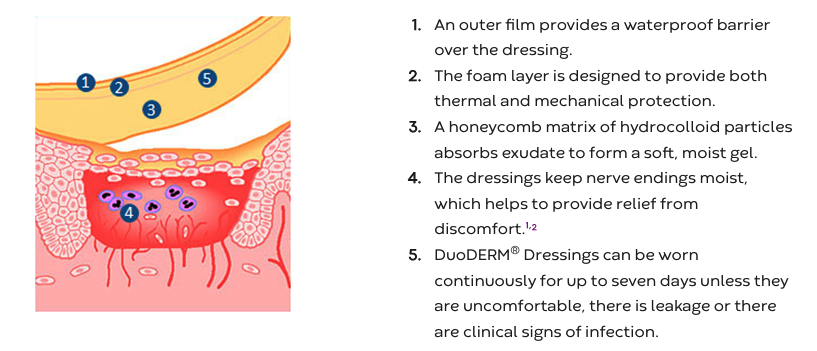
DuoDERM® Extra Thin Dressing
Thin flexible and versatile.
Designed to reduce the risk of further skin breakdown due to friction.
DuoDERM® Extra Thin Dressing can be used as a primary hydrocolloid dressing for dry to lightly exuding wounds.
It can be used as a secondary dressing to secure an AQUACEL® Dressing or an AQUACEL® Ag Dressing.
The European Pressure Ulcer Advisory Panel (EPUAP) and The National Pressure Ulcer Advisory Panel (NPUAP) guidelines recommend the usage of hydrocolloids for the management of pressure ulcers.1
DuoDERM® Extra Thin Dressing can be used to manage stage I and stage II pressure ulcers.
Protection
- A thin polyurethane film provides a bacterial and viral barrier when the dressing remains intact and without leakage.
- The film provides a waterproof barrier over the dressing.
- The dressing can be removed without damaging newly formed tissue.
- It is designed to reduce the risk of further skin breakdown due to friction by preventing contact with clothes/bed linen.
- It can be used on the body as a primary or secondary dressing.
- It can be used on skin tears and superficial wounds, dry to lightly exuding wounds, newly-formed tissue or skin at risk of further breakdown.
Ease of Application
- The translucent backing enhances dressing placement and initial monitoring of the wound.
- The dressings are easy to use, mold and can be cut to shape to dress awkward areas.
- Wash your hands, cleanse and rinse the wound and then dry the surrounding skin.
- Measure the wound to select the appropriate dressing size, allowing a 3.0cm (1¼ -inch) overlap on intact skin around the whole wound.
- Warm the dressing between your hands.
- Remove the “top” white release paper, being careful to minimize finger contact with the adhesive surface.
- Hold the adhesive side of the dressing over the wound.
- Align the dressing with the center of the wound.
- Gently apply the center part of the dressing.
- Remove the “bottom” white release paper while rolling the dressing in place – but don’t stretch it.
- Repeat the above procedure on the other side and remove the clear release paper.
- Gently mold the dressing into place for 30-60 seconds.
- Gently lift one corner of the dressing.
- Roll it away from the wound while holding the skin away.
- Gently lift the other corners and pull upwards until the dressing completely peels off.
PDF File
DETAILS
Additional information
| Manufacturer | ConvaTec |
|---|---|
| Brand | DuoDERM |
| Pad Size | 1 3/4" x 1 1/2", 2" x 4", 2" x 8", 3" x 3", 4" x 4", 4" x 6", 6" x 6", 6" x 7" |
| Includes Border | |
| Latex | |
| Shape | Oval, Rectangle, Spot, Square, Triangle |
| Absorbency | |
| Condition | |
| Amount | Individual Dressing, Box of 5, Box of 10, Box of 20, Case of 300 |
| Billing Supported | |
| HCPC Code |
Reviews
Most orders ship same day
Straightforward and Streamlined
8am - 7pm EST Monday thru Friday
